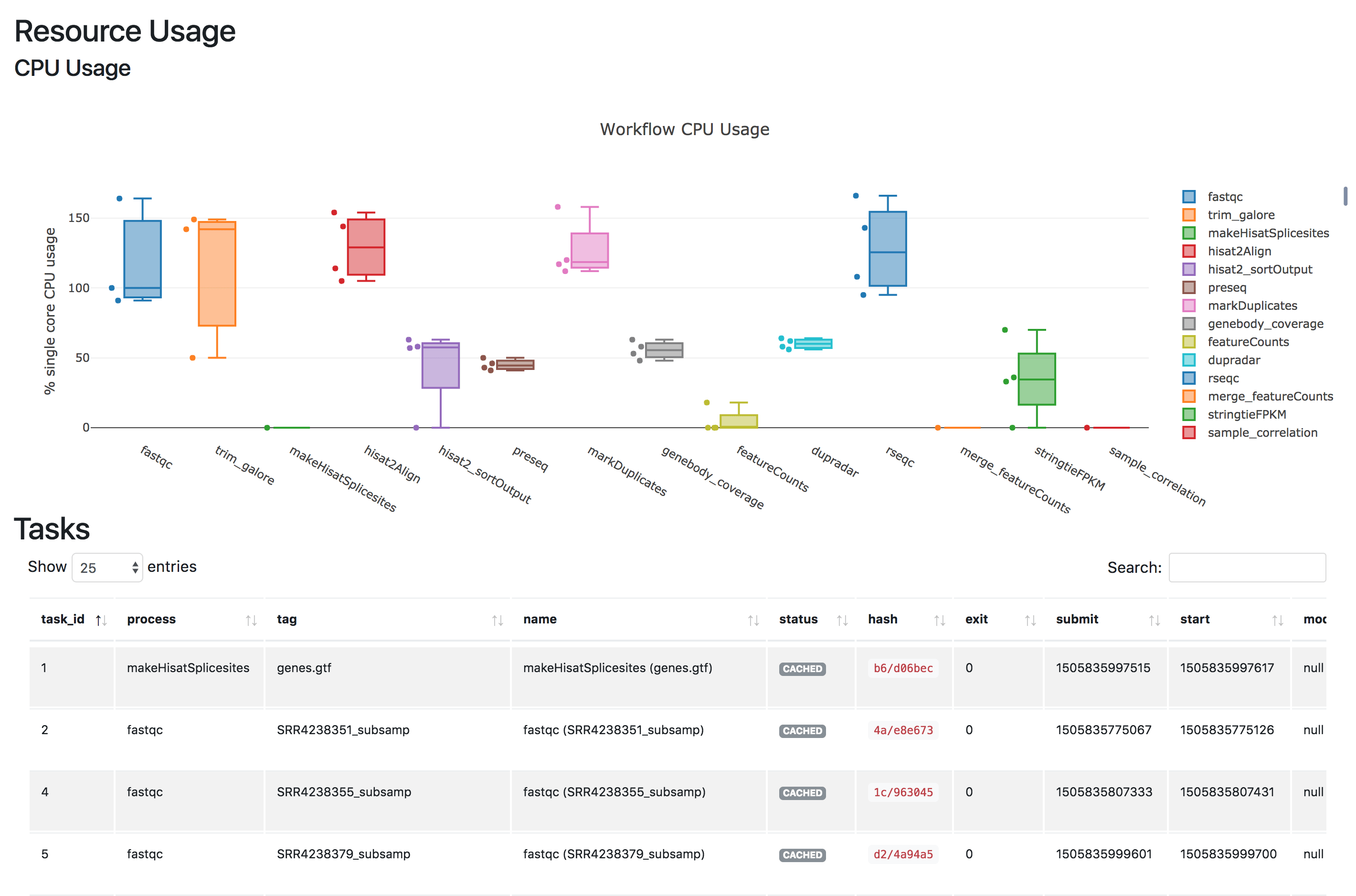Last week saw the inaugural Nextflow meeting organised at the Centre for Genomic Regulation (CRG) in Barcelona. The event combined talks, demos, a tutorial/workshop for beginners as well as two hackathon sessions for more advanced users.
Nearly 50 participants attended over the two days which included an entertaining tapas course during the first evening!
One of the main objectives of the event was to bring together Nextflow users to work together on common interest projects. There were several proposals for the hackathon sessions and in the end five diverse ideas were chosen for communal development ranging from new pipelines through to the addition of new features in Nextflow.
The proposals and outcomes of each the projects, which can be found in the issues section of this GitHub repository, have been summarised below.
The HTML tracing project aims to generate a rendered version of the Nextflow trace file to enable fast sorting and visualisation of task/process execution statistics.
Currently the data in the trace includes information such as CPU duration, memory usage and completion status of each task, however wading through the file is often not convenient when a large number of tasks have been executed.
Phil Ewels proposed the idea and led the coordination effort
with the outcome being a very impressive working prototype which can be found in the Nextflow
branch html-trace.
An image of the example report is shown below with the interactive HTML available here. It is expected to be merged into the main branch of Nextflow with documentation in a near-future release.

The H3Africa Bioinformatics Network have been developing several pipelines which are used across the participating centers. The diverse computing resources available across the nodes has led to members wanting workflow solutions with a particular focus on portability.
With this is mind, Scott Hazelhurst proposed a project for a 16S Microbial data analysis pipeline which had previously been developed using CWL.
The participants made a new branch of the original pipeline and ported it into Nextflow.
The pipeline will continue to be developed with the goal of acting as a comparison between CWL and Nextflow. It is thought this can then be extended to other pipelines by both those who are already familiar with Nextflow as well as used as a tool for training newer users.
Toolboxing allows users to incorporate software into their pipelines in an efficient and reproducible manner. Various software repositories are becoming increasing popular, highlighted by the over 5,000 tools available in the Galaxy Toolshed.
Projects such as Biocontainers aim to wrap up the execution environment using containers. Myself and Johan Viklund wished to piggyback off existing repositories and settled on Dockstore which is an open platform compliant with the GA4GH initiative.
The majority of tools in Dockstore are written in the CWL and therefore we required a parser between the CWL CommandLineTool class and Nextflow processes. Johan was able to develop a parser which generates Nextflow processes for several Dockstore tools.
As these resources such as Dockstore become mature and standardised, it will be possible to automatically generate a Nextflow Store and enable efficient incorporation of tools into workflows.
Example showing a Nextflow process generated from the Dockstore CWL repository for the tool BAMStats.
Nanopore sequencing is an exciting and emerging technology which promises to change the landscape of nucleotide sequencing.
With keen interest in Nanopore specific pipelines, Hadrien Gourlé lead the hackathon project for Nanoflow.
Nanoflow is a de novo assembler of bacterials genomes from nanopore reads using Nextflow.
During the two days the participants developed the pipeline for adapter trimming as well as assembly and consensus sequence generation using either Canu and Miniasm.
The future plans are to finalise the pipeline to include a polishing step and a genome annotation step.
Nextflow already has experimental support for AWS Batch and the goal of this project proposed by Francesco Strozzi was to improve this support, add features and test the implementation on real world pipelines.
Earlier work from Paolo Di Tommaso in the Nextflow repository, highlighted several challenges to using AWS Batch with Nextflow.
The major obstacle described by Tim Dudgeon was the requirement for each Docker container to have a version of the Amazon Web Services Command Line tools (aws-cli) installed.
A solution was to install the AWS CLI tools on a custom AWS image that is used by the Docker host machine, and then mount the directory that contains the necessary items into each of the Docker containers as a volume. Early testing suggests this approach works with the hope of providing a more elegant solution in future iterations.
The code and documentation for AWS Batch has been prepared and will be tested further before being rolled into an official Nextflow release in the near future.
The event was seen as an overwhelming success and special thanks must be made to all the participants. As the Nextflow community continues to grow, it would be fantastic to make these types meetings more regular occasions.
In the meantime we have put together a short video containing some of the highlights of the two days.
We hope to see you all again in Barcelona soon or at new events around the world!